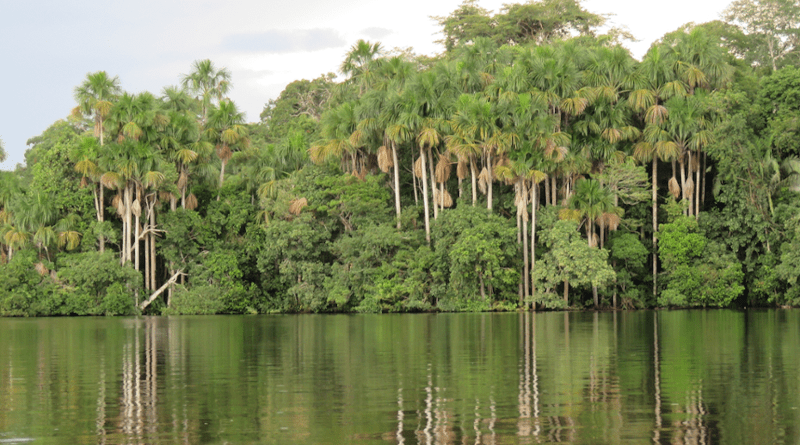Amazon Approaches Catastrophic Potential Tipping Point
Landmark report released at climate change conference
A first-of-its-kind scientific report detailing the natural emergency unfolding in the Amazon basin was presented today at the COP26 conference in Glasgow. The Science Panel for the Amazon (SPA) Amazon Assessment Report was developed by over 200 scientists and is the most in-depth, comprehensive, and holistic scientific assessment yet made on the state of the Amazon Basin.
The report warns that the Amazon is approaching a catastrophic potential tipping point due to deforestation, degradation, wildfires, and climate change. Crossing such a tipping point could result in a permanent loss of rainforest and a disastrous shift to dry and degraded ecosystems, the scientists say.
Carina Hoorn, associate professor at the UvA’s Institute for Biodiversity and Ecosystem Dynamics, is the leading author of the report’s first chapter-Geology and geodiversity of the Amazon: Three billion years of history –and co-author of its second-Evolution of Amazonian biodiversity. ‘
The Amazon is one of the most important biodiversity hotspots on the planet,’ says Hoorn. ‘If we allow the forest to be destroyed now, it will be gone forever.’
10% of all known species
The Amazon Basin is one of the world’s most biologically diverse areas. More than 10% of all known animal and plant species can be found there. And even given that figure, the true species diversity of the Amazon is currently underestimated, with a new species being found every other day. The basin also produces the largest river discharge on Earth, accounting for about 16 to 22% of the world’s total river input to the oceans. And it is a crucial carbon storage and sink, holding approximately 150 to 200 billion tons of carbon in its soils and vegetation.
Yet humans are having an increasingly dramatic impact on the Amazon.Approximately 17% of Amazonian forests have already been converted to other land uses, and at least an additional 17% have been degraded. Experts estimate 366,300 km2 of forests were degraded between 1995 and 2017, and every year hundreds of thousands of hectares of forests burn across the basin as fires escape nearby pastures or recently deforested areas.
Sustainable development pathways
The SPA report urges decision-makers to act now and recommends an immediate deforestation moratorium in areas that are already nearing tipping points. It also calls for zero deforestation and zero forest degradation to be reached in the entire Amazon region before 2030. The report identifies various sustainable development pathways and underscores the importance of offering science-based, data-driven recommendations, as well as encouraging technological innovation, and nature-based solutions using knowledge from indigenous peoples and local communities to guide decision-making and policy-making.
‘The Amazon has a long history, with rainforests emerging over 60 million years ago. This sensitive ecosystem managed to adapt slowly to climate and landscape changes. This is how geology works – slowly,’ says Hoorn. ‘But the ecosystem might not survive the unprecedented rates of change by human action. We need to raise awareness of the risks of losing the forest. And we need to further investigate the consequences of deforestation, e.g. increased erosion and climate change.’

